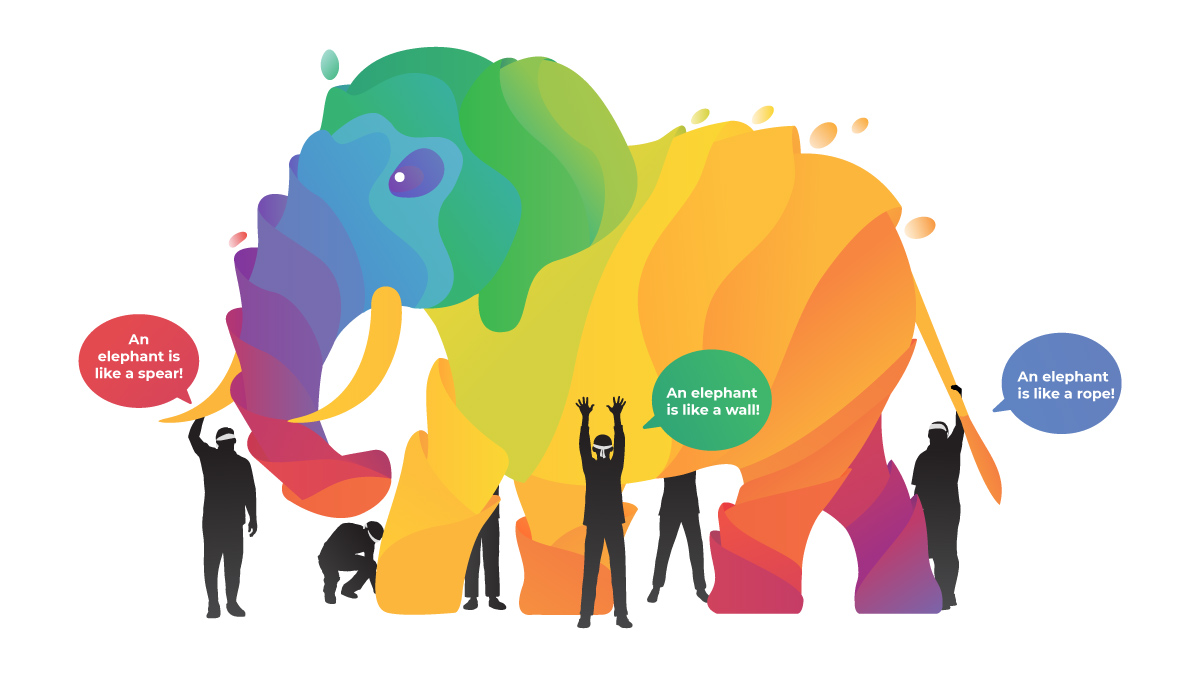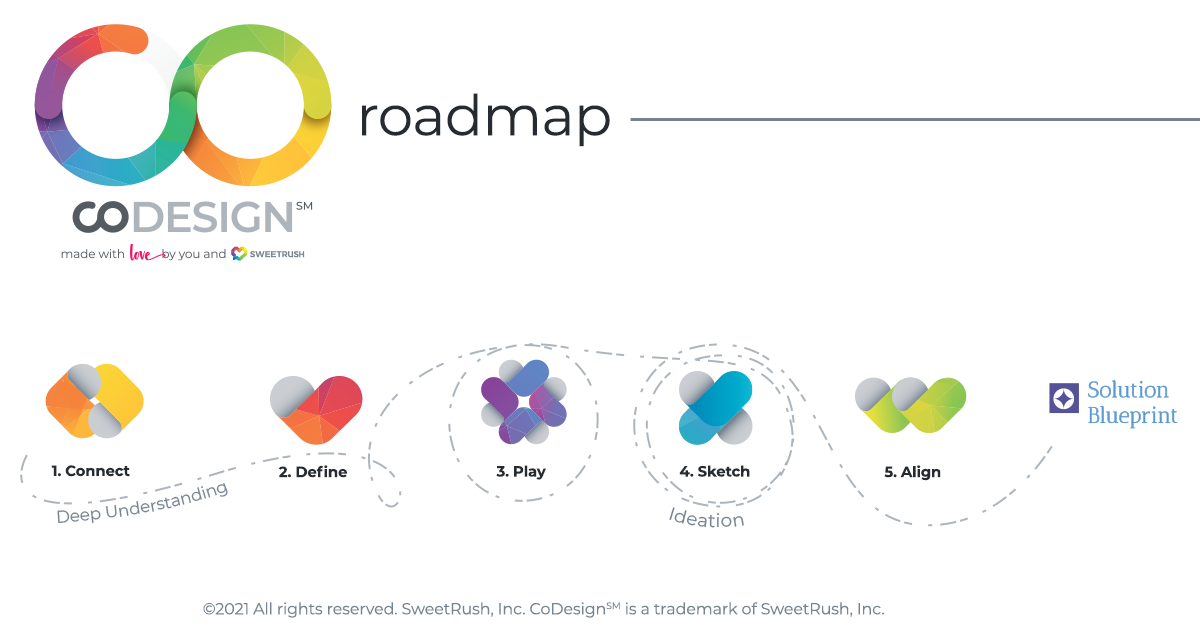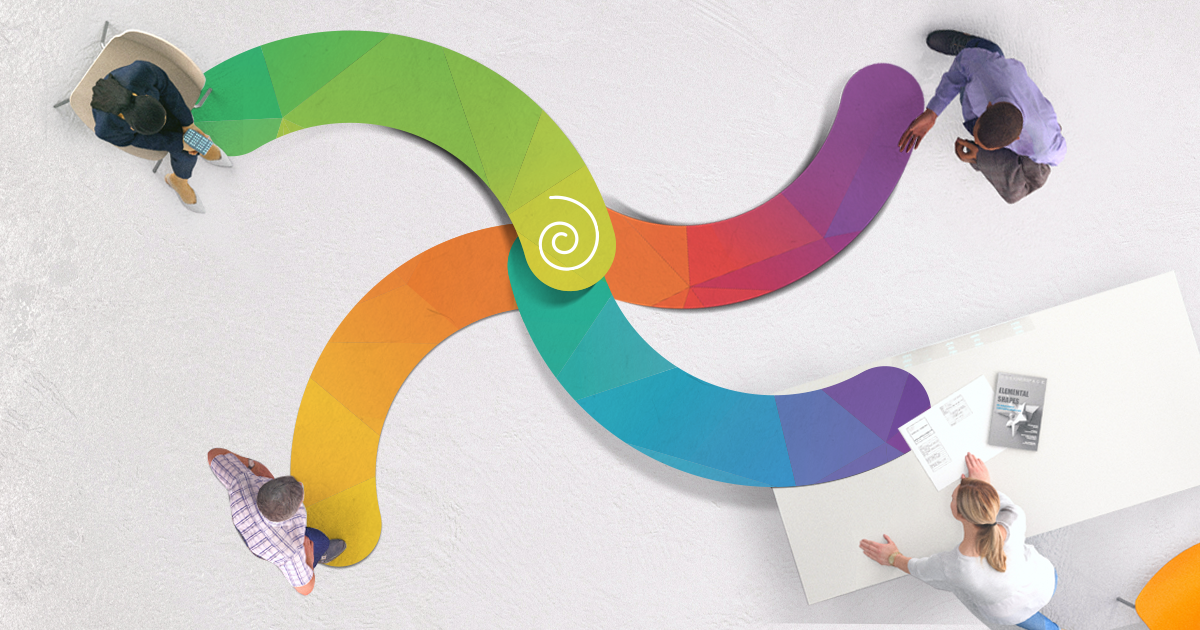High-profile and high-impact training initiatives are a significant investment for your organization. Leverage the design thinking process to create learner-centric blended learning programs that deliver optimal ROI!
Every year, organizations spend billions of dollars on employee onboarding, sales training, and leadership training—all high-profile programs with a wide reach—and they’re expecting to get a significant return on their investment. No pressure, L&D!
But the truth is, pressure from leadership is no greater than the pressure we put on ourselves as learning professionals. We want our learning programs to be the right solution to address business needs and performance objectives—and to make an authentic, emotional connection with learners.
The Trend of Blended Learning
We have more tools, technology, and techniques than ever before to accomplish these goals. And rather than thinking in silos about delivery modalities (e.g., instructor-led training versus eLearning), we’re getting more and more creative in how we combine them.
Blended learning experiences—learning journeys—can engage learners in different ways, fire up cognition, fit into their busy workdays, and provide time for reflection. We can tailor a program to include context setting, demonstration, practice, self-reflection, social learning, coaching, and performance support. In other words, we can craft a holistic program that delivers value at every step in the learning process.
Our goals are to speed adoption and application on the job, maximize retention, and make learners feel good about their own growth and development!
The question then becomes, with so many options available to create custom learning programs, how do you know if you’re designing the right solution for your organization, audience, and objectives? If not, you’re wasting your time and money.
The Blind Leading the Blind
Typically, when a new learning solution design is needed, project teams come together, including stakeholders, L&D professionals, and SMEs. And along with their relevant expertise and positive intent, they bring something else: their bias. Everyone at the table thinks they know what the best solution is from their perspective.
Some rely on their experience being in the learner’s seat, but it may have been quite a while ago. “Back when I was a new manager in the ’90s…”
Some want to push and pioneer new technology. “Wouldn’t it be cool if we made this a mobile app?”
Everyone believes they know what learners want and need. But do they really?

Lauren Granahan, Director of Organizational Effectiveness and codeveloper of SweetRush CoDesign℠ (more on that soon), compares this typical solution design process to the children’s fable of the six blind men and the elephant:
Six blind men have an opportunity to meet an elephant. They’re excited because they’ve heard a lot about the creatures but have never encountered one in person. When they’re brought to the elephant, each man approaches from a different direction. The first man touches the trunk and says, “An elephant is like a giant snake.” The second man touches the body and says, “An elephant is like a wall.” The third touches the legs and says, “An elephant is like a tree.” And this continues, with each man forming a different conclusion. Each is correct and simultaneously wrong.
How does this apply to learning solution design? Each of the project team members naturally wants to make conclusions about what’s right for the learners (and the organization), but each has only a fraction of the information.
At SweetRush we saw an opportunity to elevate our learning solution design approach—not only for blended learning solutions but all solutions. We started integrating design thinking in our process, and the gains have far exceeded our initial goal to “see the elephant.”
Design thinking—and SweetRush’s version for learning experience design, which we call CoDesign—enables:
- Deep understanding and empathy for the learner audience
- Alignment on audience needs
- Alignment on program outcomes, performance objectives, and mental model shifts
- Alignment on program constraints
- Alignment on program (or component) design
- Alignment on implementation and adoption (change management)
- Expedited design phases
- Collaboration and camaraderie in the project team (which can help later during those inevitable “bumps in the road”)
Design thinking (CoDesign) turned out to be disruptive, eye-opening, and extraordinarily effective.
Let’s find out why.
Building Empathy for Your Audience: The First Step in Design Thinking
It’s true for product development, it’s true for advertising and marketing, and it’s true for learning: If you want to know how to reach and connect with your audience, you need to build empathy for them and understand them. That happens to be the first stage of design thinking.

Each step of the process includes tailored activities that provoke deep thought and consideration as the team explores ideas and comes together to align on the best ones.
The first step, which we call “Connect,” tends to be the most eye-opening in the design thinking process. We use a variety of activities to gain a deep understanding of learners. Some activities happen live in the design thinking session—for example, a “talk show” interview with learners. Some are a hybrid of prework and live experience. One of the activities we particularly love for redesigning programs is having learners write “love letters” and “breakup letters” to the existing program. Writing happens before CoDesign, and letters are read and discussed during the session. People get very creative with these letters!
Understanding Constraints for Blended Learning: Design Thinking’s Second Step
Our ultimate goal is to create a learning solution design that’s optimal for both the learners and the organization. So it’s important to understand program constraints, which we explore in this step, “Define.” These might include anything from budget and timeline to the learning environment to the time learners have available for training. Getting these on the wall (or on a virtual whiteboard) early means that as we move to the next steps of design and start dreaming up ideas, we have a tether to the reality of what works for the organization.
“This is also when we are exploring the mental model shifts that we want learners to make as a result of learning and the performance objectives,” Lauren says. “We ensure that we have appropriately framed the challenge (the ‘how might we’) for ideation as well.”
The Define step can also help us mitigate risk and anticipate change management needs related to the learning program. In an activity called “Kill the Program,” we brainstorm the reasons a program might fail—from adoption to implementation. We then determine what we can influence through our solution design or other methods, such as communications, manager support, systems or procedural changes, and so on.
Ideating and Prototyping a Blended Learning Program: The Next Steps of Design Thinking
We now have empathy for our learners and a better understanding of their needs, and we understand the organizational constraints. Now it’s time for the magic to happen! During these next steps, which we call “Play” and “Sketch,” we generate ideas about what our blended learning program should look and feel like. Learners are a critical part of the team generating these ideas.
It’s completely normal for everyone in the room to be experiencing different feelings as we step into this stage. Some will be excited and geared-up idea machines, while some may be a little uneasy about translating all the information gathered into something concrete. An experienced design thinking facilitator can help all parties show up and be the best contributors they can be—this takes careful preparation and the ability to “read the room” and adjust on the fly.
The beauty of design thinking is that the process allows people to stretch their imaginations and then come back to gain consensus, and this happens multiple times. Each time, new ideas are added to the mix and then validated against the understanding and constraints gathered in the initial steps.
Testing and Validating with the Actual Learners: Wrapping Up the Design Thinking Process
The Sketch step resulted in a prototype. Now in our final “Align” step, that prototype gets tested. A prototype can be anything from a sketch on paper to a video storyboard to a functional mock-up of an eLearning course. The idea is to present something that the audience (learners) can react to and provide feedback on.
“It’s important to emphasize that the learners have been along for the ride throughout the CoDesign process. At this stage, they’re being leveraged as testers for the prototype we create,” Lauren says.
And in our experience, there will definitely be things to tweak. But overall, the design thinking steps set us up for success in designing a solution that learners connect with.
From Solution Design to Launching Your Blended Learning Program
The Align step validates the team’s work during CoDesign, and it solidifies buy-in and sets the team up with a clear path forward for blended learning design and development. The design thinking process overall can also yield great insights that can help with implementation and launch—for example, themes that resonate with learners that can be integrated into marketing communications.
Greater empathy, level setting on constraints, learner-centric solutions, validation, and buy-in. Reduce blind spots and bias, and maximize your time and money! What new blended learning program or redesign do you have coming up that could benefit from design thinking?
Interested in learning more about design thinking for learning? Watch this webinar!




